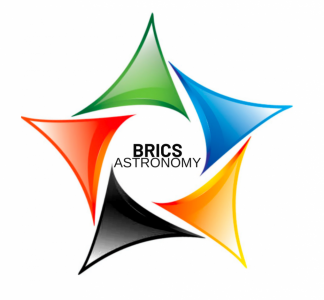In conjunction with the 9th Annual BRICS Astronomy Working Group Workshop, we will hold a 1.5-day Data Science Hackathon after the two days of science meetings. Participants will work on machine learning approaches to a data-
BRICS Astronomy Working Group Hackathon: Clustering Astronomical Data with Machine Learning
The BRICS Astronomy Working Group workshop was succeeded by a two-day hackathon held on 18 – 19 October 2023 at the South African Astronomical Observatory (SAAO) in Cape Town, South Africa. This event, under the Hack4dev initiative, was designed for postgraduate students residing within the BRICS countries, who possess Python experience and a strong interest in data science and machine learning.
The primary objective was to employ clustering techniques to distinguish between active galactic nuclei “AGNs” and star forming galaxies “SFGs”, ultimately revealing inherent groupings and validating them against established astronomical knowledge. AGNs are galaxies that emit a significant portion of their luminosity from a central supermassive black hole, often overwhelming the typical emissions from the galaxy itself. These intense radiations result from the release of gravitational energy as matter accretes onto the black hole. In contrast, SFGs are characterized by dominant star formation processes, with their radio emissions primarily stemming from synchrotron radiation produced by relativistic electrons and free-free emissions from HII regions. Accurately distinguishing between these two categories is pivotal for advancing our comprehension of galaxy formation and evolution.
The data came from a survey called MeerKAT International GHz Tiered Extragalactic Exploration (MIGHTEE), covering various deep space areas. The survey used the MeerKAT telescope and observed these areas for a long time, totaling about 20 square degrees. The chosen areas had a lot of data from previous studies, making them interesting for current and future research.
The Hackathon brought together 27 postgraduate students, representation from all the BRICS countries. The event was both intense and exhilarating. Despite the tight two-day timeframe for task completion, participants demonstrated an unwavering commitment to achieving technological excellence. The participants were split into six groups for the hackathon. On the final day, each group delivered presentations on their unique approaches to the task. These were carefully assessed and judged. The quality of the presentations across the groups was notably impressive. Each team diligently completed their assigned tasks and presented their work with utmost dedication.
The BAWG hackathon provided a specialized learning environment for emerging talents within the BRICS nations. It provided a valuable opportunity for individuals equipped with Python skills and have passionate interest in data science and machine learning to enhance their understanding in the realm of astronomy.
-
Mission of the BRICS Astronomy Working Group
-
The mission of the BRICS Astronomy Working Group is to promote cooperation between BRICS member countries in the field of astronomy and enabling technologies through joint activities of government, universities, research institutions, and industry, as relevant, to develop astronomical sciences, generate new knowledge, train human capital, develop new technologies and applications, and improve public understanding of science.
